Introdection
Chikungunya—The first word that comes to mind when hearing the name is “pain.” Severe joint pain can almost paralyze even a healthy person for a few days. It is not just an illness but a painful experience that leaves a deep mark on the body and mind. Millions of people worldwide are infected with this mosquito-borne virus yearly and struggle with its painful symptoms.
In this article, we will discuss the Chikungunya virus symptoms in detail. We will also explain its causes, treatment, and prevention methods in simple language so that you and your family can stay safe from this disease. The article has been written with all the world’s people in mind, so people from any region can benefit from it.
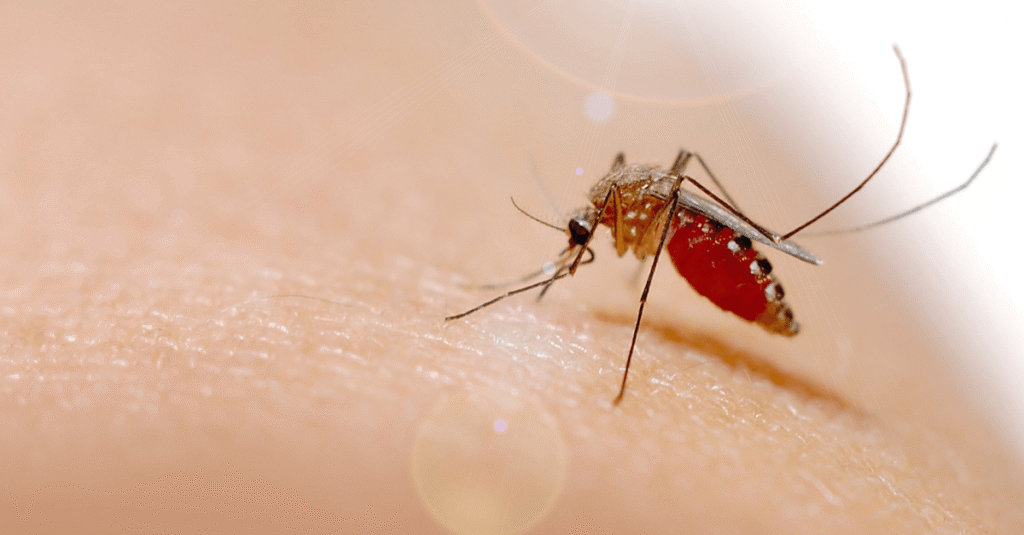
What is Chikungunya?
Chikungunya is a viral disease caused by the Chikungunya virus (CHIKV). It is primarily transmitted to humans through the bite of Aedes mosquitoes, which also carry dengue and Zika viruses. The word “Chikungunya” comes from the Makonde language of Tanzania, meaning “to stoop” or “to bend over.” This is because sufferers often have to walk with a stooped posture due to severe joint pain.
Since the disease was first identified in Tanzania in 1952, it has spread throughout Africa, Asia, Europe, and the Americas. The geographic range of the disease is increasing as the Aedes mosquito spreads more easily due to globalization, travel, and climate change.
How is the Chikungunya virus transmitted?
The main cycle of Chikungunya virus transmission is quite simple:
- Infected mosquito: When an Aedes mosquito (Aedes aegypti or Aedes albopictus) bites a person infected with chikungunya, the virus enters the mosquito’s body.
- Virus reproduction: After entering the mosquito’s body, the virus multiplies within 8-10 days and resides in the mosquito’s salivary glands.
- Human transmission: When the infected mosquito bites a healthy person, the virus enters the healthy person’s blood through its saliva and infects them.
This virus is not transmitted directly from person to person. However, in rare cases, it can be transmitted from an infected mother to her newborn during pregnancy. Although this is rare, it is also possible to communicate it through blood transfusions.
Chikungunya symptoms: When and how do they appear?
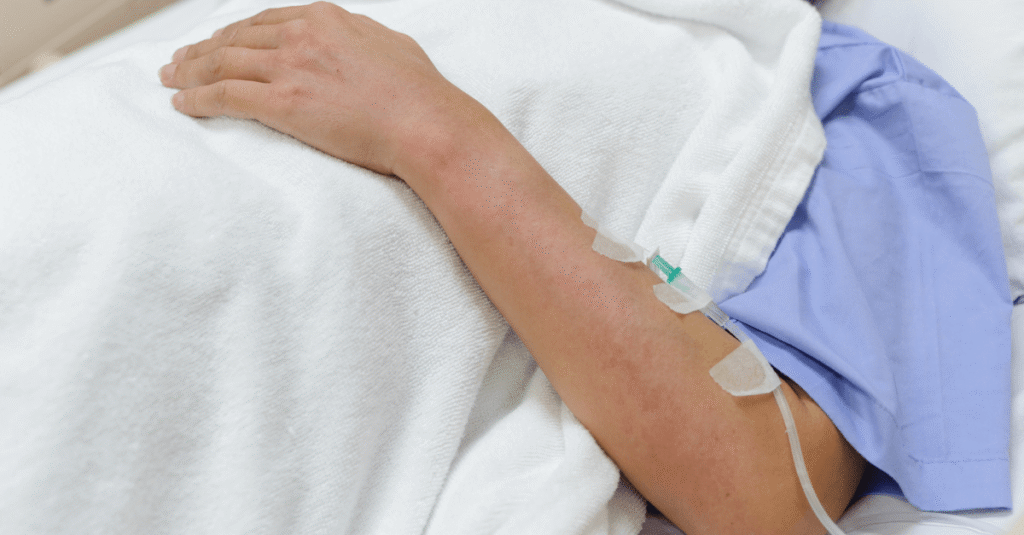
The symptoms of chikungunya usually appear 2 to 12 days after a mosquito bite, but in most cases, they appear within 3 to 7 days. This is called the virus’s incubation period.
The symptoms of chikungunya are often confused with those of dengue, but there are some specific differences. Its main symptoms are:
1. Sudden high fever:
The most common and first symptom of chikungunya is a sudden onset of high fever. The temperature can often rise to 102°F to 104°F (39°C to 40°C). This fever usually lasts for 2-3 days and then subsides.
2. Unbearable joint pain (Arthralgia):
This is the most distressing and one of the main identifying symptoms of chikungunya.
- Nature of pain: The pain is usually very severe and debilitating. Many patients describe this pain as “breaking” or “stab-like”.
- Affected area: The pain is mainly in the small joints of the hands and feet (e.g. fingers, wrists, ankles). However, larger joints such as the knees, elbows, shoulders, and back can also be affected.
- Duration of pain: Acute pain usually lasts from a few days to a few weeks. However, in some cases, especially in older people, this pain can last for months or even years. Which is known as chronic chikungunya arthritis. This pain and joint stiffness are felt more after waking up in the morning.
3. Rash:
About half of the patients develop a rash on the body within 2 to 5 days of the onset of fever.
- Nature: This rash is usually maculopapular, meaning there are small, reddish spots on the skin and some swelling.
- Location: It mainly appears on the chest, back, arms, and legs, but it can also occur on the face in some cases. The rash may also be itchy.
4. Muscle pain (Myalgia):
In addition to joint pain, severe muscle pain may also occur throughout the body, especially in the back and legs.
5. Headache:
A severe headache is a common symptom of chikungunya. It often occurs along with fever.
6. Nausea and vomiting:
Some patients complain of nausea and vomiting, which further aggravates their weakness.
7. Fatigue and weakness:
Patients experience extreme fatigue and weakness during the illness and even after recovery. This fatigue can last for several weeks.
8. Eye problems:
In rare cases, chikungunya can cause eye problems, such as conjunctivitis (redness in the eyes), eye pain, and difficulty looking at light (photophobia).
Chikungunya in children, pregnant women and the elderly
Although chikungunya is not usually a life-threatening disease, it can be serious for certain groups of people.
- Children: Symptoms in children may be similar to those in adults, but the rash is more common. If newborns are infected by their mother during birth, symptoms can be severe, including fever, seizures, and brain infection (meningoencephalitis).
- Pregnant women: Although chikungunya during pregnancy is not dangerous for the mother, infection during delivery can be risky for the newborn.
- Older adults: Older people, especially those with pre-existing conditions such as high blood pressure, diabetes, or heart disease, are more likely to develop complications from chikungunya. They are also more likely to have long-term joint pain.
Long-term effects: When the pain doesn’t go away.
While most people recover completely from chikungunya within a few weeks, a significant proportion (about 40-60%) suffer from long-term joint pain. This condition is called “Post-Chikungunya Rheumatic Disorder.”
- Chronic arthritis: Symptoms such as persistent pain, swelling, and stiffness in one or more joints for months or years. It can be similar to rheumatoid arthritis.
- Physical disability: Chronic pain causes difficulty in daily activities, greatly affecting the patient’s quality of life.
- Psychological impact: Many patients suffer from depression, anxiety, and sleep problems due to persistent pain and physical disability.
Diagnosis of Chikungunya
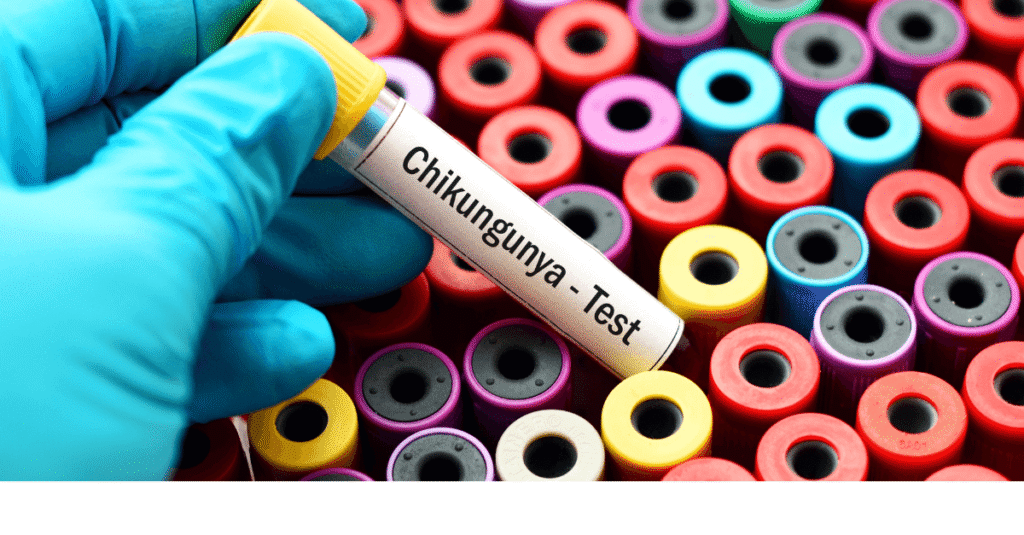
Since the symptoms of chikungunya overlap with those of other diseases, such as dengue and Zika, it is difficult to diagnose the disease based on symptoms alone. Laboratory tests are required for accurate diagnosis.
- Serological Test: This test detects antibodies (IgM and IgG) produced against the chikungunya virus in the blood. IgM antibodies are produced a few days after the onset of symptoms, indicating a recent infection.
- Viral RNA Test (RT-PCR): In the early stages of the disease (usually within the first week), the RT-PCR (Reverse Transcription-Polymerase Chain Reaction) test is used to detect the genetic material (RNA) of the virus in the blood. It is the most reliable test.
Since the mosquito that carries dengue and chikungunya is the same, and the symptoms are similar, doctors often recommend testing for both diseases.
Chikungunya Treatment: Fighting Pain
Unfortunately, no specific antiviral drug that works against the Chikungunya virus has yet been discovered. Its treatment is mainly symptomatic; that is, the emphasis is on relieving the symptoms.
1. Rest:
The body becomes very weak during illness. Therefore, adequate rest is very important. This gives the body the strength to fight the virus.
2. Fluid intake:
Fever and vomiting cause a lot of water to be lost from the body, creating a risk of dehydration. Therefore, it is necessary to drink plenty of fluids. These include:
- Pure water
- Fruit juice
- Coconut water
- Soup
- Saline solution (ORS)
3. Medicines for pain and fever control:
- Paracetamol: Paracetamol is the safest medicine for reducing fever and pain.
- Non-steroidal anti-inflammatory drugs (NSAIDs): NSAIDs like ibuprofen or naproxen can be used for acute pain after a diagnosis of chikungunya, not dengue, on the advice of a doctor. However, aspirin or other NSAIDs should be avoided until the difference between dengue and chikungunya is confirmed, as they can increase the risk of bleeding, which can be fatal in dengue.
4. Treatment of chronic pain:
For those with chronic joint pain, it is necessary to consult a rheumatologist or arthritis specialist. He can recommend medications (such as chloroquine, hydroxychloroquine, or methotrexate) and physiotherapy according to the type of pain, on the advice of a doctor, and a physiotherapist.
Chikungunya Prevention: Fight against mosquitoes
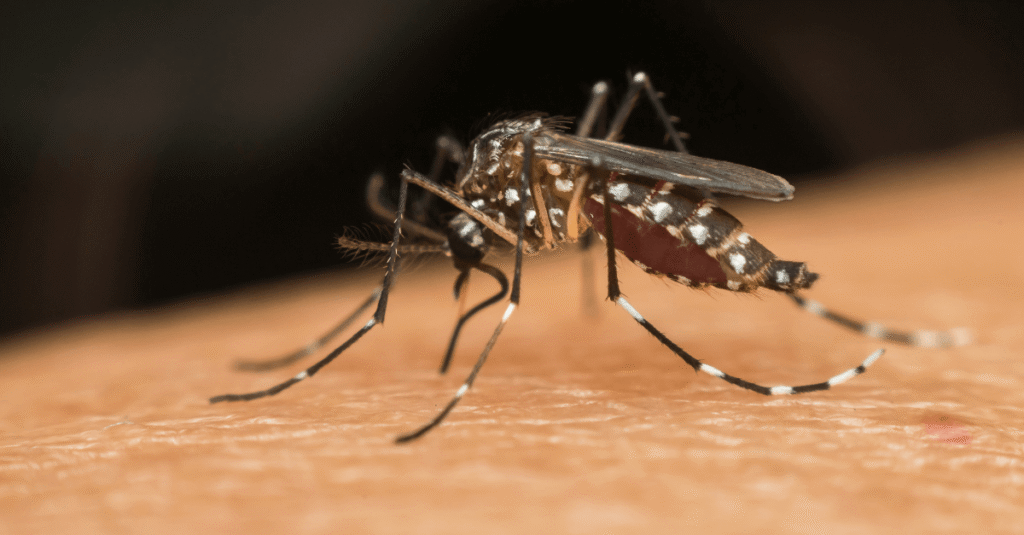
Since there is no specific treatment for chikungunya, prevention is the best way to protect yourself. The main idea is to protect yourself from mosquito bites and prevent mosquito breeding.
Personal protection:
- Clothing: Wear long-sleeved clothing and pants that cover the body well during the day. Especially in the morning and evening when Aedes mosquitoes are most active. Light-colored clothing attracts mosquitoes less.
- Mosquito repellent: Apply a repellent containing DEET, Picaridin, or lemon eucalyptus oil to exposed skin. Read the package instructions carefully before using it on children.
- Mosquito nets: Always use mosquito nets when sleeping, especially during the day. Mosquito nets are very important for children.
- Window and door nets: Install nets or mesh on windows and doors to prevent mosquitoes from entering the house.
Environmental protection: Prevent mosquito breeding
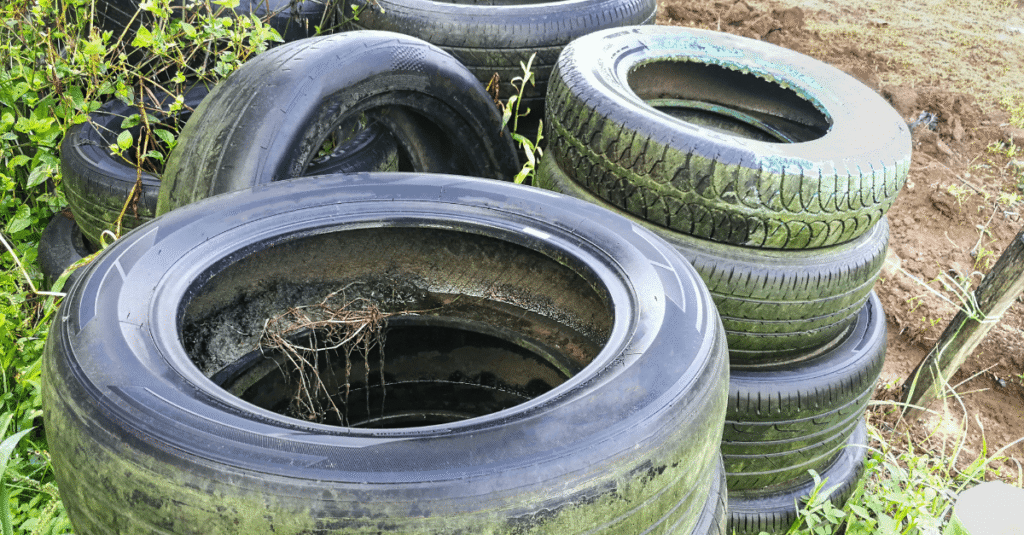
Aedes mosquitoes lay their eggs in clean, stagnant water. Therefore, destroying mosquito breeding grounds in and around your home is crucial.
- Removing standing water: Do not allow water to accumulate anywhere in and around the house. Dispose of standing water in flower pots, tires, plastic containers, cans, abandoned containers, etc., at least once a week.
- Covering water tanks and containers: Always properly cover water tanks, buckets, or drums.
- Keeping drains and sewers clean: Keep drains and sewers around the house so that water does not accumulate.
- Trays under refrigerators and ACs: Clean water accumulated under refrigerators or ACs regularly.
Vaccine: A new hope
Significant progress has been made in the field of vaccines to prevent chikungunya. In November 2023, the United States Food and Drug Administration (FDA) approved the world’s first chikungunya vaccine, IXCHIQ, for adults. It is a single-dose vaccine and is being considered a new preventive measure for those traveling to or living in chikungunya-prone areas. However, it will take more time for this vaccine’s availability and use to spread worldwide.
Frequently Asked Questions (FAQs)
Question 1: What is the main difference between chikungunya and dengue?
Answer: Although many of the symptoms of both diseases are similar, the main difference is the type of pain. In chikungunya, joint pain (especially in the small joints) is much more severe and debilitating. On the other hand, dengue causes more body and muscle aches and a higher risk of bleeding (such as bleeding gums or nosebleeds), which is rare in chikungunya.
Question 2: Can chikungunya happen again if you have had it once?
Answer: Usually, after being infected with the chikungunya virus once, the body develops permanent immunity against it. Therefore, it is almost impossible to get infected with the same virus again.
Question 3: Is chikungunya contagious?
Answer: Chikungunya is not spread from one person to another through sneezing, coughing, or touching. It is transmitted only through the bite of an infected Aedes mosquito.
Question 4: Are there any home remedies to reduce the pain of chikungunya?
Besides medical advice, some home remedies can help relieve the pain. For example, cold or hot compresses can be applied to the affected joint, light exercise or physiotherapy can be done. And natural anti-inflammatory ingredients like turmeric or ginger can be taken. However, these are never a substitute for the main treatment.
Question 5: Should a patient with chikungunya be isolated?
Answer: There is no need to isolate the patient, as the virus is not directly transmitted. However, the patient must be kept inside a mosquito net so that an uninfected mosquito cannot bite him and spread the virus. This will help keep other family members and neighbors safe.
Conclusion
Chikungunya is a troublesome disease, but with proper knowledge and timely measures, it can be reduced in severity, and one can stay safe. Remember, prevention is the best treatment. Prevent mosquito breeding by keeping your home and surroundings clean. Take all necessary measures to protect yourself and your family from mosquito bites.
If you or someone you know shows symptoms of chikungunya, seek medical advice immediately. We can win against mosquito-borne diseases like chikungunya and build a healthy world through collective efforts and awareness.

Hi, I’m M Saif, a digital marketer with a strong focus on SEO and content writing. I help businesses improve their online visibility, drive organic traffic, and create engaging content that converts. With a results-driven approach, I work on strategies that not only boost rankings but also deliver real value to audiences.








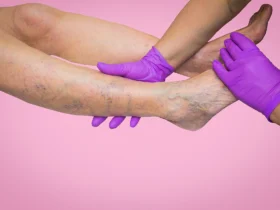
Leave a Reply